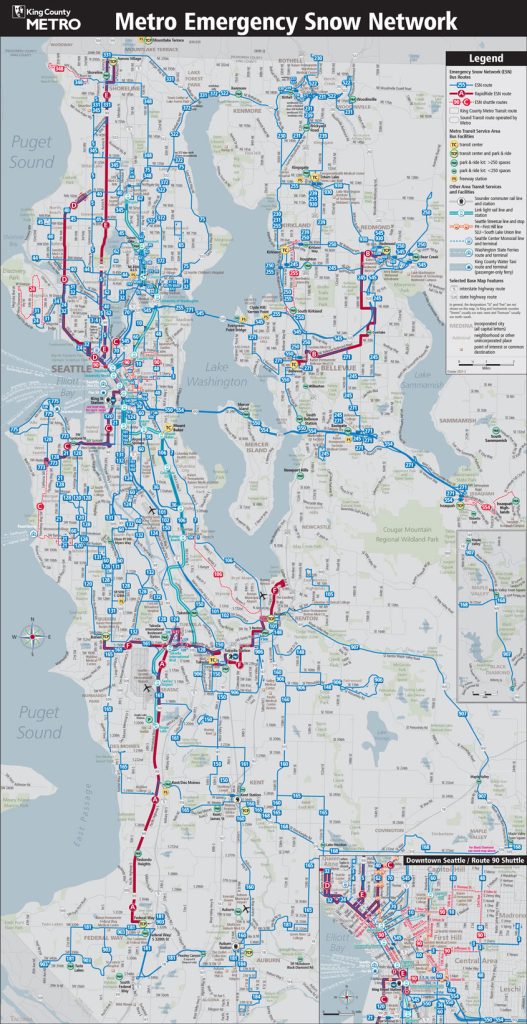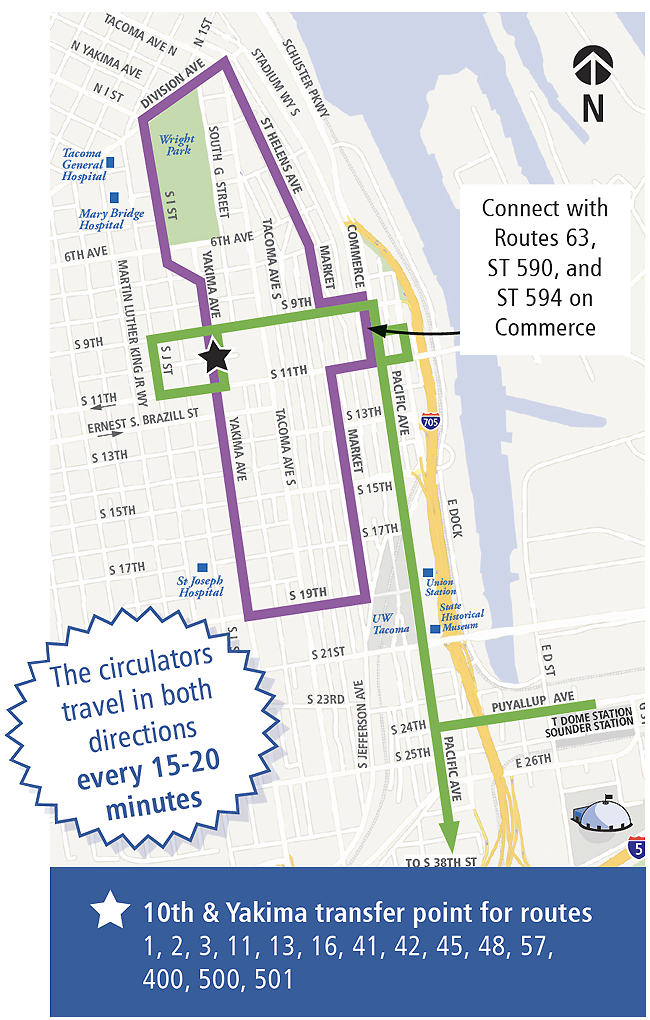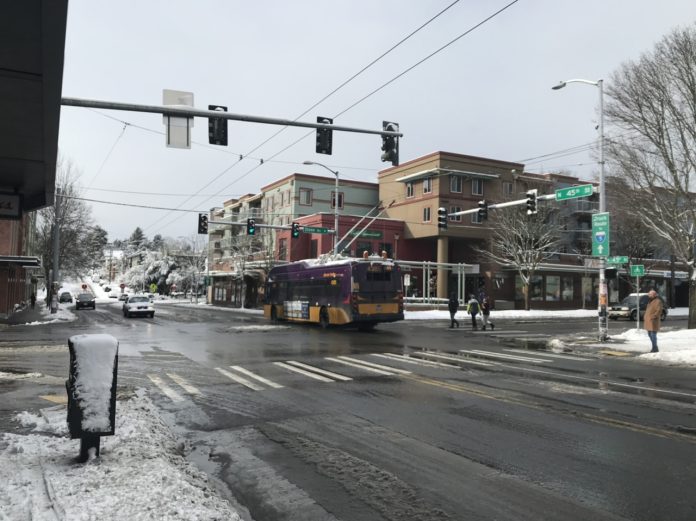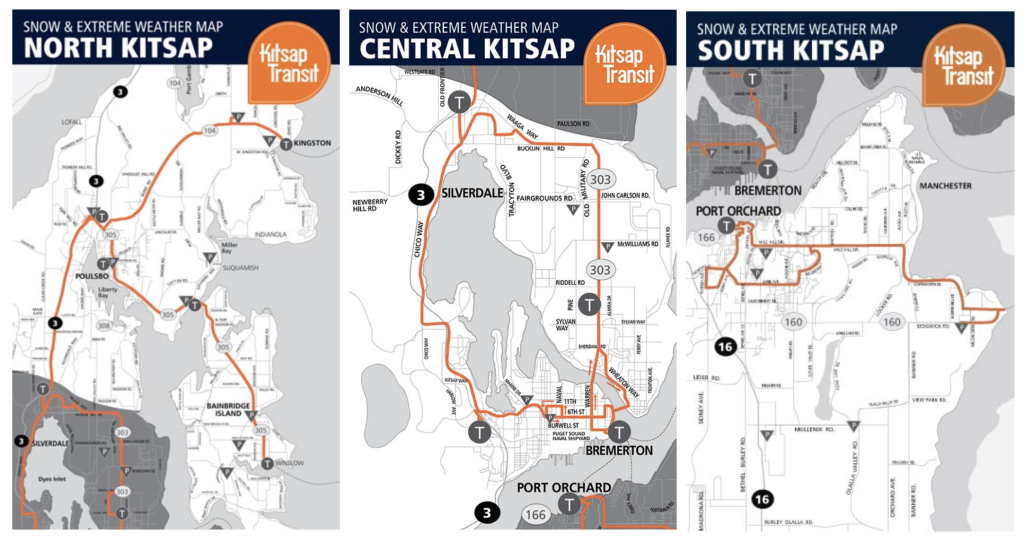Over the weekend, Puget Sound transit agencies reduced or cut service because of the Christmas holiday but also due to the snowstorm beginning in earnest on Sunday. Snow led to challenging operations with many delayed and canceled trips and some ending with a stuck and jackknifed articulated bus. Some transit operators even ended service early on Sunday. With the full force of the snowstorm deepening, transit service continues to be heavily affected with more reduced service this week.
Be sure to check the snow route for your bus before embarking on your journey as some bus stops will not be in operation.
King County Metro has activated the Emergency Snow Network (ESN) for the whole of December 27th and it could be extended if severe conditions continue (technically the ESN is in effect until further notice). When the ESN is activated, it goes into effect for the entire following day from notice and remains in effect even if conditions improve during the day. Metro consolidates its system to highest ridership service using safe pathways to sustain transit operations. That system usually includes over 60 routes and includes the special Route 90 that acts as a shuttle throughout Downtown Seattle, First Hill, and Capitol Hill. Most routes on the hills east of Downtown Seattle are canceled, leaving just Route 10 and the Link 1 Line and First Hill Streetcar as the other alternatives to Route 90.

Routes that Metro plans to operate include Routes 3, 4, 5, 7, 10, 21, 24, 31, 32, 36, 40, 44, 45, 48, 60, 62, 65, 67, 70, 75, 90, 101, 102, 105, 106, 120, 124, 128, 131, 132, 148, 150, 160, 161, 165, 168, 181, 184, 230, 231, 239, 245, 250, 255, 271, 331, 345, 348, 372, 903, 906, 907, and 930 as well as the RapidRide A, B, C, D, E, and F Lines. Some of these will operate as shuttle routes only and Metro will run slimmed down ACCESS paratransit. Water Taxi and connecting shuttle bus service has been suspended.
Sound Transit is operating somewhat modified service, but the Link 1 Line, Tacoma T Line, and Sounder S and N Lines are expected to run normal service with possible delays. ST Express bus routes are running on snow routes with Routes 577, 578, 590, 592, 594, and 595 terminating and beginning service at Royal Brougham instead of further into Downton Seattle.
The Seattle Streetcar system continues to operate despite the conditions, but Seattle Monorail service will be suspended until at least noon due to snow and ice on the tracks. Intercity Transit is running mostly normal service but some routes are operating on snow routes. With limited exceptions, Community Transit, Pierce Transit, and Everett Transit are also operating on snow routes; Pierce Transit is offering a special circulator routes in Downtown Tacoma.

Kitsap Transit has also implemented a reduced snow network for its bus routes. The agency will operate the reduced system until at least 9:00am, though ferries will continue to operate along with connecting commuter bus routes to Kingston and Southworth. From 9:00am onward, Kitsap Transit plans to run Routes 4, 5, 8, 9, 332, 333, and 390 as well as BI Ride, SK Ride, and Kingston Ride on modified routes while Route 307 and ferries largely operate normally; other routes will run on emergency snow routes or remain canceled. Further service changes could come around noontime.
In all cases, refer to agency social media and websites for maps, schedules, and service alerts. Routes may be operating very differently than normal and circumstances can change quickly.
Stephen is a professional urban planner in Puget Sound with a passion for sustainable, livable, and diverse cities. He is especially interested in how policies, regulations, and programs can promote positive outcomes for communities. With stints in great cities like Bellingham and Cork, Stephen currently lives in Seattle. He primarily covers land use and transportation issues and has been with The Urbanist since 2014.






